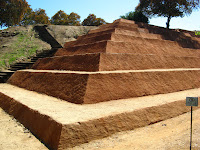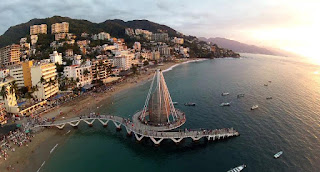After sending the turtles
- Lázaro Cárdenas is home to a deepwater seaport that handles container, dry bulk, and liquid cargo. The port also exports automobiles from various Mexican assembly plants to markets in southeast Asia and South America. The port handled 1.24 million TEU in 2012 and is expanding to a capacity of 2.2 million TEU annually. Cargo moves to and from the port by road and rail equally, with rail service provided exclusively by Kansas City Southern de México. The port is expected to become a major container facility due to congestion at the U.S. ports of Los Angeles and Long Beach and its relative proximity to major cities such as Chicago, Kansas City, and Houston. In preparation for the port's increased capacity, railway and highway infrastructure running north–south through the center of Mexico has been upgraded to handle the anticipated increase in volume of goods bound for the United States using this transportation corridor. If a proposed government-backed Pacific port is built at Punta Colonet, Baja California, goods flowing to U.S. states like Arizona and Nevada could bypass the congested Los Angeles region with closer access those markets, providing increased competition with Lázaro Cárdenas.

The small village of Tecpan de Galeana will be our final pause before reaching our destination. When I saw this image on the town's official website, I thought that was being used to indicate some sort of spa/resort/meditation center...but that's not the case at all. Maybe I need to brush up on my Spanish?
According to Google Translate feature, what it really means is: this glif..."Represents the municipality and the city; It is a hieroglyph, interpreted in its generic sense, meaning "where the ruling queen." It has a picture in a "T" column symbolizing unity; some steps that can be interpreted as different degrees of activity in which the family is based on common progress. In general, the symbolism gives identity to their history, culture and traditions."
I recall times from my youth when as a family we would watch cliff divers in Acapulco as they were showcased on ABC's Wide World of Sports. Remember that show? "Spanning the globe, to bring you a constant variety of sport. The thrill of victory, and the agony of defeat."
My last tid-bit will be about the cliff divers. "Another enigmatic attraction at Acapulco are the La Quebrada Cliff Divers. The tradition started in the 1930s when young men casually competed against each other to see who could dive from the highest point into the sea below. Eventually, locals began to ask for tips for those coming to see the men dive. Today the divers are professionals, diving from heights of forty meters into an inlet that is only seven meters wide and four meters deep, after praying first at a shrine to the Virgin of Guadalupe. On December 12, the feast day of this Virgin, freestyle cliff divers jump into the sea to honor her. Dives ranges from the simple to the complicated and end with the "Ocean of Fire" when the sea is lit with gasoline, making a circle of flames which the diver aims for. The spectacle can be seen from a public area which charges a small fee or from the Hotel Plaza Las Glorias/El Mirador from its bar or restaurant terrace.
For more pictures of Acapulco (get out your calendars...you'll want to go!), try this link, this one, or lastly this one. (note: i have NO affiliation with any of these links).
Thank you for following along on this blog. I hope that it has been entertaining and a bit informative. WALK ON!




































